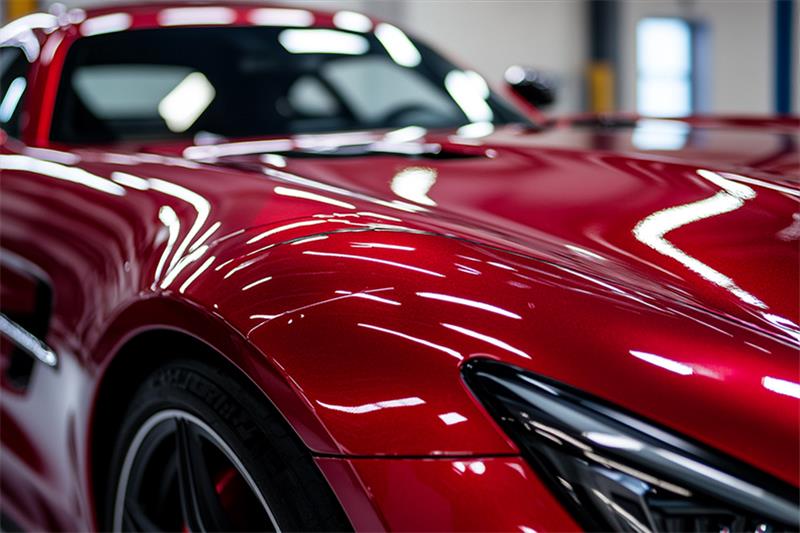Paint Protection Film (PPF) has become increasingly popular among car owners looking to preserve their vehicle's pristine look. This clear, durable polyurethane film acts as an invisible shield, protecting your car's paint from scratches, rock chips, insect acids, and harmful UV rays.

However, while Paint Protection Film offers excellent protection, certain issues can arise, impacting its appearance and effectiveness. This article will delve into common PPF problems and provide practical solutions to keep your car looking its best.
Common PPF Problems:
Yellowing: One of the most common issues is PPF yellowing, especially with older films or those exposed to excessive sunlight. This discoloration occurs due to UV degradation of the film's adhesive layer.
Solution: Opt for high-quality Paint Protection Film with UV inhibitors. Additionally, regular washing and waxing can help prevent UV damage. If the film has already yellowed, professional detailing services might be able to restore its clarity.
Bubbling or Lifting: Air bubbles trapped beneath the film during installation, improper cleaning of the car's surface beforehand, or exposure to extreme temperatures can lead to bubbling or lifting.
Solution: Minor bubbles can sometimes be massaged out. However, larger bubbles or lifted edges require professional attention. A qualified installer can reheat and reposition the film, ensuring proper adhesion.
Staining: Certain contaminants like bird droppings, tree sap, and hard water spots can etch into the PPF if not addressed promptly, leaving behind permanent stains.
Solution: Regular washing and immediate removal of contaminants are crucial. If stains occur, a mild cleaning solution and a soft microfiber cloth can be used. For stubborn stains, consult a professional detailer.
Scratches: While Paint Protection Film offers excellent scratch resistance, deep scratches can still penetrate the film's surface.
Solution: Minor scratches often disappear with self-healing technology incorporated in many modern PPFs. Deeper scratches might require professional polishing or, in extreme cases, replacement of the affected section.
Hazing: Improper washing techniques, using abrasive cleaners, or automatic car washes with harsh brushes can create a hazy or cloudy appearance on the film's surface.
Solution: Always hand wash your car with a pH-neutral car shampoo and a soft microfiber mitt. Avoid abrasive cleaners and automatic car washes. If hazing occurs, a professional detailer can polish the film to restore clarity.
Edge Lifting: This issue often arises due to improper installation or using low-quality Paint Protection Film. The edges of the film may start to peel or lift over time, compromising its protective capabilities.
Solution: Choose a reputable installer who uses high-quality film and precise installation techniques. If you notice edge lifting, contact the installer or a professional detailer for a re-installation or repair.
Orange Peel Effect: This refers to a textured appearance on the film's surface, resembling the peel of an orange. It usually occurs due to improper installation or using a low-quality film.
Solution: Opt for a high-quality Paint Protection Film and a skilled installer who can ensure a smooth and flawless application.
Preventing PPF Problems:
Prevention is key to maintaining the pristine look of your Paint Protection Film. Here are some preventative measures:
Choose high-quality PPF: Invest in reputable brands known for their durability, clarity, and UV protection.
Professional installation: Always opt for experienced and certified installers who use proper techniques and high-quality materials.
Regular washing and waxing: Wash your car regularly with pH-neutral car shampoo and use a wax or sealant specifically designed for PPF.
Prompt contaminant removal: Clean bird droppings, tree sap, and other contaminants immediately to prevent staining.
Avoid harsh chemicals and abrasive cleaners: Only use cleaning products explicitly designed for PPF.
Regular inspections: Inspect your PPF regularly for any signs of damage or wear and tear.
While Paint Protection Film can face certain challenges, understanding these common problems and their solutions allows you to take proactive steps to keep your car looking its best. By choosing high-quality film, professional installation, and proper maintenance, you can enjoy long-lasting protection and preserve your vehicle's shine for years to come.
